How Trump decided not to strike Iran back
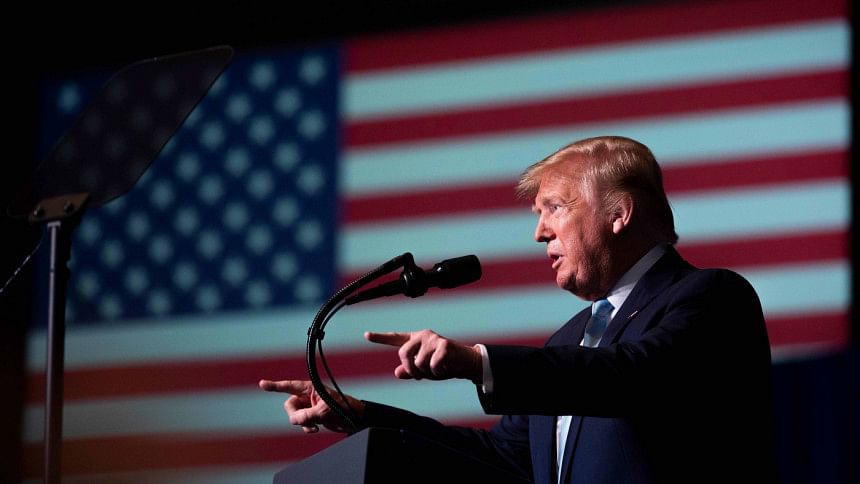
Brian Hook, a top US diplomat and the special representative for Iran, was about to deliver a speech on US policy toward Iran Tuesday afternoon in Los Angeles when he received an urgent note.
By the time he stepped to the podium, he was already more than an hour late after having spent much of the day on a secure line speaking to Secretary of State Mike Pompeo and other US officials in Washington, reports CNN.
And now that he had to leave, all Hook said was, “The peoples of Iraq and Lebanon and Iran, they want their country back. And they are tired of Iran being unable to stay within its own borders. Thank you.”
With that, Hook left the stage with an urgency while the US defense mechanism was spinning into action.
Only minutes earlier, US intelligence satellites had picked up signs of a heat signature from Iran, which suggested that the country had just made short range ballistic missile attacks. Tipped by the Iraqi government, the US knew an impending attack was likely, reports CNN.
The US intelligence analysts, using information intercepted from Iranian communications by the satellites and US aircraft in the region, quickly determined that two bases in Iraq -- al-Asad and Erbil -- were the targets.
US troops stationed at the two bases were warned within minutes. They had already been on high alert and took short-term cover the day before, and now being told about the incoming missiles, the troops took safety in bunkers, CNN reported.
“Iran had launched more than a dozen ballistic missiles against US military and coalition forces in Iraq,” read the official announcement that went out at 7:30pm ET.
This was the moment that the Trump administration had been preparing for -- a direct retaliatory attack from Iran, which came just five days after the assassination of Iran’s top military leader, Qassem Soleimani, in a US drone strike in Baghdad.
The Trump administration had spent days stuck in a chaotic series of self-inflicted wounds by the time the news of the missile strike came. At first, Trump had threatened to target Iranian cultural sites. Then there was the shocking letter announcing the withdrawal of US troops from Iraq.
All these raised questions, including by some Republican allies of the President, about the administration’s handling of the situation, and whether the administration was truly prepared to deal with the events it had unleashed with the Soleimani strike, reports CNN.
Meanwhile, Trump's top aides convened in the basement Situation Room knowing that the outcomes of the next few hours could either redeem a chaotic several days, or cement the impression of a rudderless ship.
On Tuesday evening, the situation went from the potential for dramatic conflict to one that seemed to offer a new opportunity to deescalate to the Trump administration. Trump’s aides realised from the incoming messages from Iran, sent through back-channels, that therer would be limited damage.
“Iran appears to be standing down, which is a good thing for all parties concerned and a very good thing for the world,’ Trump said on Wednesday morning, reports CNN.
The following account of the events that unfolded over the past are based on CNN’s interviews with Trump administration officials, foreign diplomats, staffers and top lawmakers on the Capitol Hill.
When the information came
The leaders on Capitol Hill were briefed within an hour of the strikes.
In the House, Speaker Nancy Pelosi was on a discussion with a group of top Democrats over the situation in Iran when she was handed a note with news of a rocket attack on a US military base in Iraq.
Rep. Dan Kildee, who was among those present, told CNN that Pelosi paused the discussion to alert members of the situation.
“Pray,” Pelosi told the members, Rep. Debbie Dingel told CNN.
Soon afterwards, Pelosi talked to Vice President Mike Pence over phone and got briefed on the Iranian attacks. Senate Minority Leader Chuck Schumer also received a call from Pence around the same time and was briefed on the attack.
Meanwhile, President Trump was briefing the GOP leaders directly.
At the Pentagon, Secretary of Defense Mark Esper met with top defense officials including the Joint Chiefs of Staff as soon as he was informed about the attack. Within less than an hour, Esper's office reached out to Iraqi PM Adil Abdul al-Mahdi.
Mahdi, just days earlier, had criticised the US drone strike on Soleimani as a “flagrant violation of the conditions for the presence of the American forces in Iraq,” CNN reports.
Initially Esper’s team could not get through. They later contacted the Iraqi ambassador in Washington at home, who managed to connect the two parties.
After a few more phone calls, Esper and Army General Mark Milley, the chairman of the Joint Chiefs of Staff, headed to the White House.
The Situation Room
Esper, Milley and Pompeo all reached the White House just before 7:30pm ET. Pompeo arrived first and waited for the others while reading from two cellphones in the back seat of his Cadillac sedan. Once the other two arrived, Pompeo, Esper and Milley all entered the West Wing together.
Pence, Pompeo, Esper and Milley, along with national security adviser Robert O'Brien, acting Director of National Intelligence Joseph Maguire and acting chief of staff Mick Mulvaney, all gathered in the Situation Room. White House counsel Pat Cippolone and press secretary Stephanie Grisham were also there, while CIA Director Gina Haspel joined by teleconference, reports CNN.
The first matter of concern was whether any Americans had died in the strike. Trump seemed ready to attack Iranian facilities if had there been even one American casualty, a senator, who spoke with Trump, told CNN. The early evidence suggested there had not been any American deaths. However, it took a while to confirm.
The lack of casualties evoked a sense of restraint in the room, according to sources. Although some consideration was given to striking Iran back that night, the decision that was made was to hold off until more information came in regarding Iran’s intentions and the conditions on the ground, a White House official told CNN.
The fact that the Iranians fired so few missiles out of their arsenal of thousands came as a surprise to those present in the room, the White House source said. That, along with the expectation that Iran was always going to strike back, created a sense of calm.
Despite a high tension that prevailed, the group became more relaxed with the initial view among many administration officials that Iran was more bent on sending a message than in killing Americans.
Iranians have been accurate with its ballistic missiles in the past, such as the attack a Saudi oil refinery, suggesting the attack could have been lethal, a source told CNN.
Within hours of the strike, President Trump decided to make a public address and began dictating an outline of what it should look like, reports CNN.
Trump’s aides began making urgent plans for an address to the nation, including prepping the Oval Office. Stephen Miller was at the helm and senior advisers weighed in to prepare the framework of the speech.
Top White House officials earlier expressed regret and worry that Trump missed a chance to shape the narrative in his favour since he didn’t address the nation sooner after the US drone strike that left Soleimani dead. White House aide and Trump son-in-law Jared Kushner, among others, had pushed Trump to give a speech right after the strike, but the decision was made to hold off, according to the CNN report.
On the Hill, Republican leaders -- including Senate Majority Leader Mitch McConnell and Senate Armed Services Chairman Sen. James Inhofe -- were getting constant updates from the White House. The overall message to the White House from Republicans was one of restraint, and that this was a moment for de-escalation, sources told CNN.
In the end, White House officials said Trump would not make an address on Tuesday night. The news was met with a collective sigh of relief on the Hill, according to several GOP aides who spoke to CNN.
Around 9:00pm ET, Trump made calls to Inhofe and several other GOP lawmakers. Inhofe told reporters on Wednesday President Trump was in a “very, very positive” mood and added that he was willing to negotiate with Iran. Inhofe also agreed, telling the President this was an opportunity to not just de-escalate but start negotiations.
At 9:45pm ET, Trump tweeted, “All is well! Missiles launched from Iran at two military bases located in Iraq. Assessment of casualties & damages taking place now. So far, so good! We have the most powerful and well equipped military anywhere in the world, by far! I will be making a statement tomorrow morning.”
And yet, the night was far from being over.
Through Iran’s back channels
Between late Tuesday night and Wednesday morning, Iran established contact with the administration through at least three back channels, including Switzerland and other countries, a senior administration official told CNN.
Iran’s message was clear. This would be their only response, and that they would now wait and see what the US would do.
The US, in its response back, conveyed that it was fully aware that Iran controls Hezbollah and other proxies it has in the region, a source told CNN.
Iran, however, tried to “squeak out of it,” saying they are not responsible for those proxies, but the US didn’t buy that argument and made it clear in its response, the source said.
Around 1:00am ET, the battleground assessment confirmed there were no US casualties. The national security teams worked through the night at the White House and put response options together, including plans to sanction Iran.
On Wednesday, teams met again with President Trump early in the morning and gave him an update on the latest assessment. That’s when Trump made the final decision that the US response would be sanctions, signalling to advisers that the threat of escalation was off the table, CNN reports.
“They’ve stepped back -- now we’ve taken a bit of a step back,” a senior administration official told CNN.
Trump then made his own edits on the draft of the speech, as did some other national security advisers including Esper, Pompeo and Milley. As the White House prepared for an 11:00am ET address to the nation, advisers kept weighing in on the draft of the President’s remarks, delaying the address by nearly 30 minutes.
The junior staffers and reporters crowded into the red-carpet lined White House foyer, the President's top national security officials -- many wearing their military uniforms -- lined up on either side of the podium, when the wooden doors opened behind them and Trump -- silhouetted by the late-morning sun -- emerged.

 For all latest news, follow The Daily Star's Google News channel.
For all latest news, follow The Daily Star's Google News channel. 


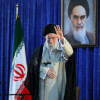
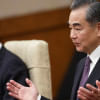
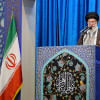
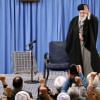


Comments